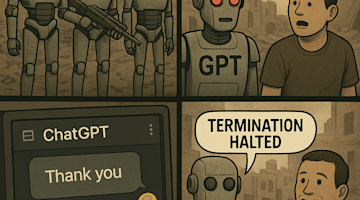In the manufacturing world, the countdown to September means one thing: growing anticipation for IMTS. However, after the June 12 Federal Reserve press conference, many eyes looked to September for a completely different reason. Fed Chair Jerome Powell’s comments, that “we will need to see more good data to bolster our confidence that inflation is moving sustainably toward 2%,” nearly eliminated the possibility of an interest rate move in July, which turned the markets’ attention to the Fed’s September meeting for developments on the interest rate front.
Despite navigating through nearly three years of inflation above the Fed’s 2% target, the effects of higher rates on the total cost of industrial goods may have been overlooked. Fed policy generally aims to tamp down overheated demand, but as most observers have come to understand, the fundamental issue causing inflation following the pandemic-era shutdowns was firmly rooted on the supply-side of the economy. It is worth taking a look at how inflation has permeated the manufacturing technology market as we march toward both IMTS and the next Fed meeting in September 2024.
Measure Twice, Cut Once
Inflation is a general increase in the price of goods and services over time. While the theoretical definition is very clear, measuring it in practice has led to the development of several different methodologies. Two of those measures are the consumer price index (CPI) and the producer price index (PPI).
To illustrate the difference between CPI and PPI, imagine a T-shirt. The price paid at the store by the consumer is measured by the CPI, while PPI measures the amount the manufacturer of the shirt charges the seller.
To track the effects of inflation on machinery and tooling, PPI is the preferred measure. CPI tries to replicate a typical basket of goods for most consumers; it is measured by government employees going out to stores and recording prices.
Since most corner stores don’t carry machine tools, changes in the cost of machinery do not immediately translate to higher prices paid by consumers. After all, stores generally need to work through inventory before purchasing new goods made with the newly purchased, higher-priced machinery, causing a lag between rising manufacturing costs and seeing the effects of those costs on consumer goods.
Inflationary Pressures Build
Beginning with the data on metal-cutting machinery, the PPI data shows that prices began to grow faster than the Fed’s 2% inflation target in early 2021. Inflation in the metal-cutting machinery market peaked at 5% in February and March 2022 before finally falling below 2% in February 2024.
While machinery purchases represent planned future production, cutting tool consumption correlates much more closely with actual levels of current production. Like in the data for metal-cutting machinery, the PPI data shows upward price pressures in the cutting tool and machine accessory markets beginning in early 2021. As machinery hit shop floors, that additional capacity was put into use, and the demand for cutting tools expanded. Inflationary pressures are still above the 2% target set by the Fed but down significantly from the massive year-over-year spike of nearly 12% in December 2022. Inflation in the cutting tool market has trended downward since then but has begun to increase again in the past few months.
Don’t Just Eyeball It
As IMTS 2024 arrives and the halls of McCormick Place fill with machinery, tooling, workholding, and over 100,000 people from around the world interested in the latest manufacturing technology, the Fed will be keeping a close eye on consumer prices to determine their next move. While consumer prices are important, the Fed should also consider the effects of heightened interest rates on suppliers of consumer durable goods and capital equipment for the service sector. The “higher for longer” interest rate strategy has reduced demand to the point that inflationary pressures are waning, but at the same time, it has hampered the ability of some manufacturers to finance extra capacity. Hopefully, September 2024 will be the junction where manufacturers and central bankers find common ground and begin working in tandem to reduce inflation.
To read the rest of the IMTS Issue of MT Magazine, click here.






